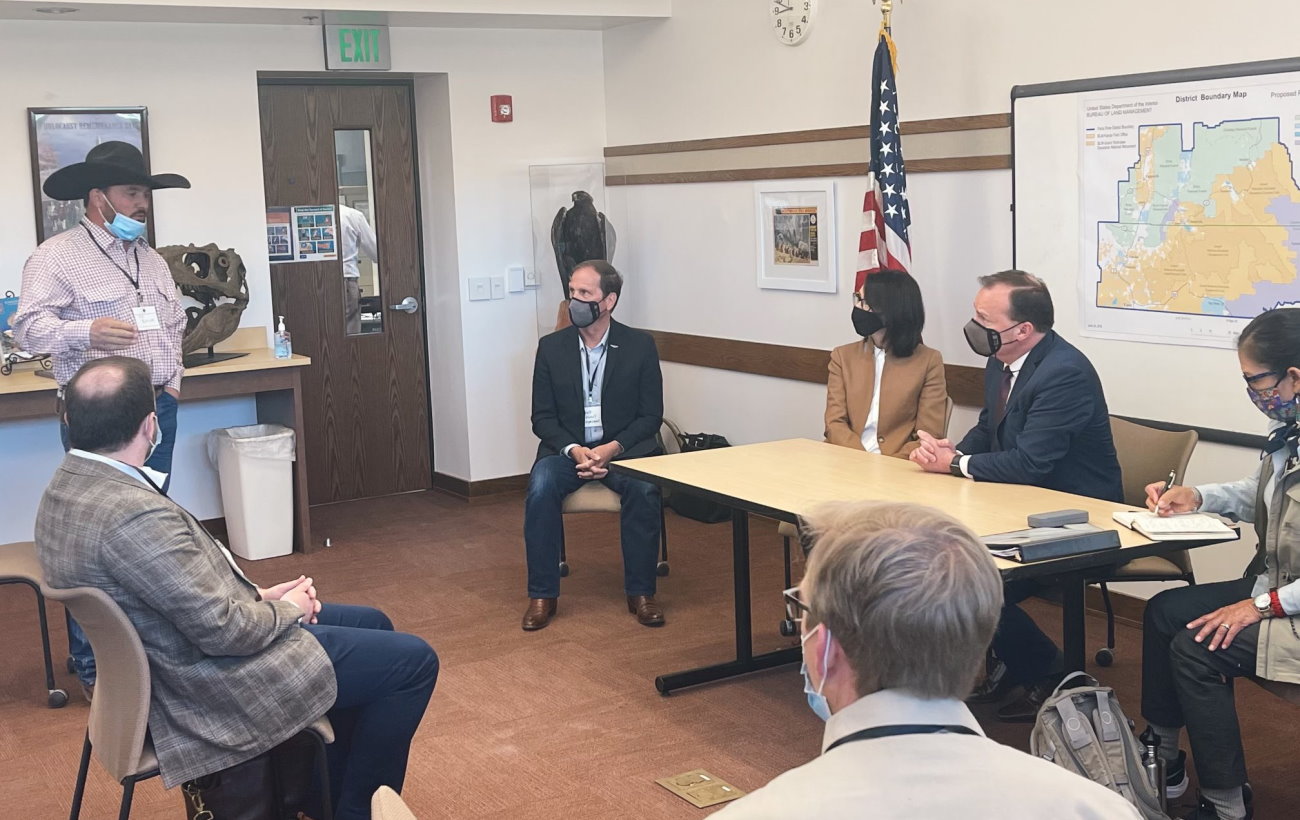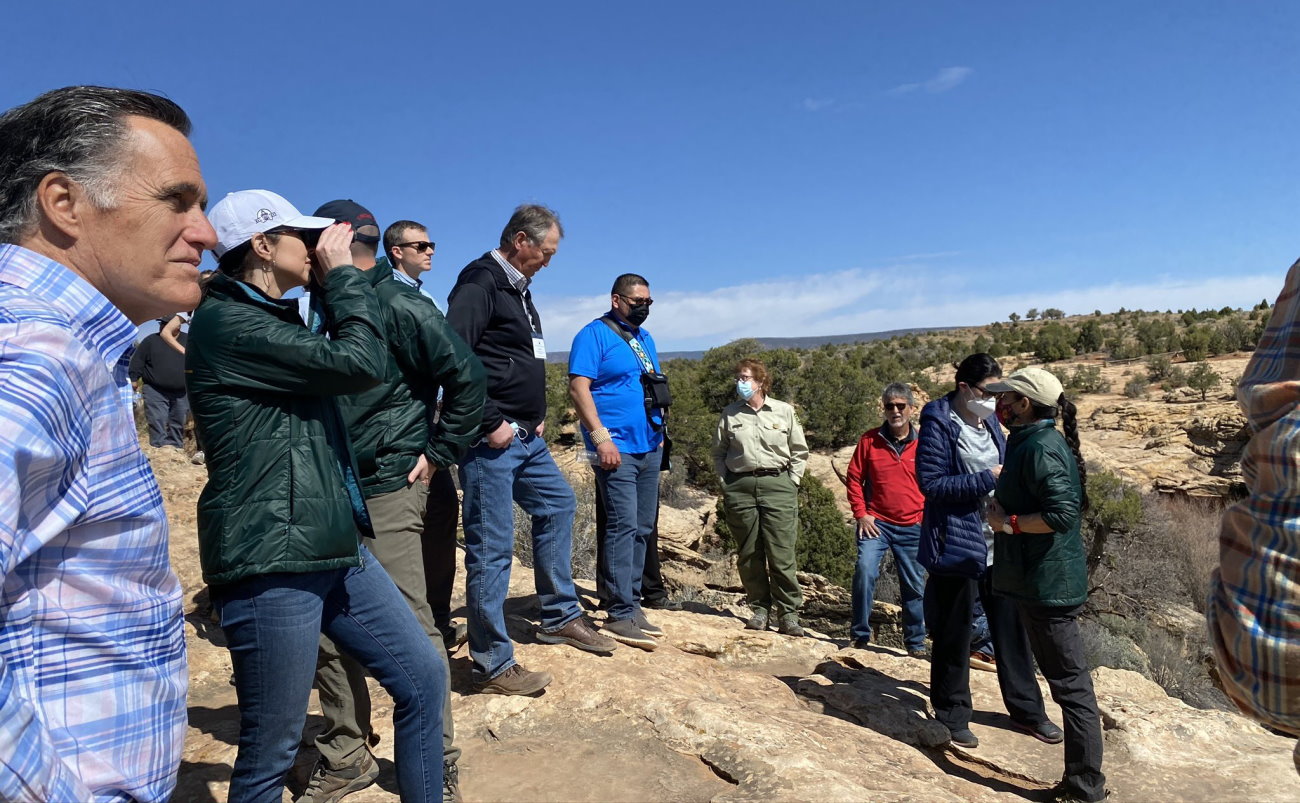
ST. GEORGE — Following the end of Interior Secretary Deb Haaland’s three-day visit to Utah’s two contested national monuments this week, Congressman Chris Stewart said he’s encouraged that the secretary may recommend the president put the fate of the Bear Ears and Grand Staircase-Escalante national monuments in the hands of Congress rather than leave it to presidential decree.

“It was really, really quite encouraging,” Stewart told St. George News while visiting St. George Friday following Haaland’s visit. “I think everyone felt she was listening. She was taking notes, she was asking some good questions, and it appeared she was genuinely trying to find a better solution than just having the president decree (the monuments) back to their original boundaries.
Haaland, who was recently appointed as the Interior Secretary in President Joe Biden’s administration, previously pledged to visit Utah during Senate confirmation hearings held last month. Prior to her appointment, Biden issued an executive order for the Interior Department to review the lingering boundary issue attached to Bear Ears and Grand Staircase-Escalante national monuments.
Former President Donald Trump shrank the size of both monuments in December 2017. Utah’s Republican leaders applauded the action, as they saw the creation of such massive national monuments as an abusive use of the Antiquities Act that also locked up valuable resources.
Bears Ears was taken from 1.3 million acres to just under 202,000 acres, while Grand Staircase-Escalante went from 1.9 million to just under 1 million acres.

“The boundaries we have now are more appropriate boundaries for both of these monuments,” Stewart said.
Since the monuments’ downsizing, there have been efforts made by individuals and conservation groups to restore them to their original size.
During her visit, Haaland met with stakeholders on both sides of the issue, which also included local tribes. Haaland herself is a member of the Laguna Pueblo in New Mexico, and the first Native American to serve as the Interior Secretary and in a White House cabinet position.
Haaland also met with federal lands and wildlife agency staff who work under the umbrella of the Interior Department.
“I know that decisions about public lands are incredibly impactful to the people who live nearby. But not just to us, not to just the folks who are here today, but people for generations to come,” Haaland told reporters during a news conference in the town of Blanding on Wednesday. “It’s our obligation to make sure that we protect lands for future generations so they can have the same experiences that the governor and I experienced today.”
Haaland also toured the Bears Ears and Grand Staircase-Escalante national monuments with state leaders and members of Utah’s congressional delegation. This included Spencer Cox, Lt. Gov. Deidre Henderson and legislative leaders, as well as Sens. Mitt Romney and Mike Lee, and Reps. Burgess Owens, John Curtis, Blake Moore and Chris Stewart.

“I think the conversations we had were pretty good,” Stewart said, though he noted the president will have the final say in whatever happens.
“The administration unfortunately has the authority through executive order to do what they want with these monuments,” he said.
Parts of the conversion dealt with working to convince Haaland to recommend the president let Congress cement the monuments’ boundaries through legislation. This way, it will end any future boundary tug-of-war. Stewart said if Biden restores the monument’s original size, this will just prompt Utah’s congressional delegation to go to the next Republican president and ask them to shrink the monuments yet again.
Going the legislative route also opens up benefits for the monuments that executive orders do not. For one, executive orders don’t come with funding attached that could authorize the use of infrastructure improvements like visitor centers and restrooms.
“Some of our Democrat colleagues would love to put a visitor center at Bears Ears – but you can’t do that with a monument (created by executive order). But if we did this through the legislative process, we’d be able to appropriate some funding for that,” Stewart said.
Going through Congress would also allow for monument management plans that would have local input, rather than be crafted through the president’s office alone.

“We feel locals should have a say in those management plans,” Stewart added. “There are enormous advantages if this is done legislatively than just through executive power.”
Working with Utah’s delegation to craft legislation for the monument could also be used as a sign that the president is willing to pursue a bipartisan item. So far, Biden’s executive actions and proposed legislation have been very partisan, Stewart said, adding that Biden had previously said his administration would seek to work in a bipartisan manner, yet really hasn’t.
“Work with us and get Republican support for it, and it could be a real jewel for the (administration),” he said. “(Biden) has been looking for bipartisan legislation and hasn’t been able to find any yet. Here’s a chance to do something bipartisan.”
As for what Haaland thought of her time in Utah, she issued the following statement in a press release from the Interior Department:
This has been a special trip, and I deeply appreciate the many people who took time to share their wisdom, perspectives, and prayers with me. How we manage public lands and national monuments is important – not just to the Tribes and ranchers and elected leaders and others who I met with this week, but to the many generations to come. I look forward to sharing what I heard and saw with President Biden so he has the benefit of these perspectives as we chart a path forward on the stewardship of these incredible culturally rich places.
I am humbled by the hospitality that was shown to me this week. In particular, the hardworking career professionals at the Bureau of Land Management and Forest Service went above and beyond, especially given the pandemic-related restrictions of our visit. I am grateful to know they are here to manage these lands.
Utah leaders also issued a joint statement Friday thanking Haaland for her visit:
We appreciate Secretary Haaland’s visit and thank her and her team for taking time to meet with us and with state, local, and tribal leaders as part of the ongoing review of these monuments. During these discussions, we reiterated our desire to find a permanent legislative solution, which we believe is the only path to finally resolving the longstanding dispute over the monuments’ boundaries and management. If the Administration decides to act unilaterally, a legislative solution that provides certainty will be nearly impossible to achieve. And without protections against the Antiquities Act, Utah is left vulnerable to the whim of future presidents. We continue to urge the Administration to work with us to craft a collaborative, consensus plan that reflects the input of the people most directly impacted and ends the political back-and-forth that our communities have been subjected to for more than 25 years.
The Associated Press contributed to this story.
Copyright St. George News, SaintGeorgeUtah.com LLC, 2021, all rights reserved.